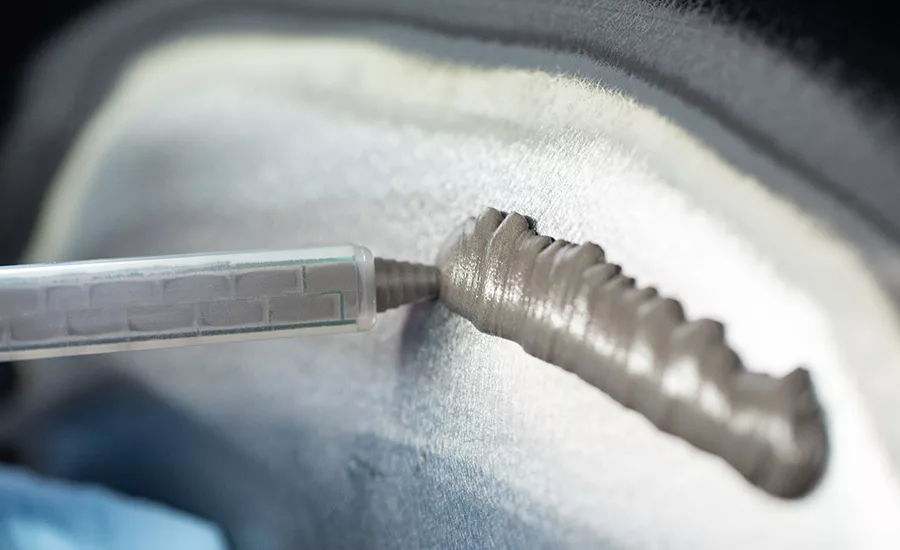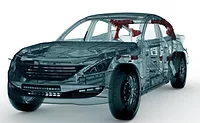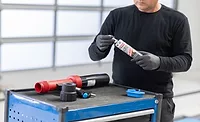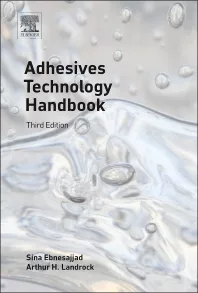HENKEL: Cold Rebuilding Epoxy Material for Automotive Body Repair
Henkel reports that Teroson EP 5020 TR can be applied at room temperature in a smooth, flameless, and solder-free process.

Henkel recently introduced Teroson EP 5020 TR, a two-component epoxy-based cold rebuilding material designed to replace conventional tin solder in aftermarket repairs of automotive body damages. Fast curing, easier to sand, and smoother to apply than previous solutions, the material also reportedly eliminates the heat and open flame process required for tin-soldered repairs.
As the automotive industry continues to develop new body materials, there is a need for compatible aftermarket repair technology that has no impact on adjacent plastic components, paint, or backside corrosion protection. Henkel reports that Teroson EP 5020 TR can be applied at room temperature in a smooth, flameless, and solder-free process.
“By providing a cold rebuilding solution to replace conventional hot tin soldering, our new two-component Teroson EP 5020 TR product saves time and labor in aftermarket body repairs and is also safer to work with,” said Joern Senftleben, regional technology/segment engineer for Vehicle Repair & Maintenance at Henkel. “Moreover, as a completely tin-free and heavy-metal-free material it is also a more sustainable alternative.”
Teroson EP 5020 TR is supplied in manual gun cartridges with a special mixing nozzle for ease of application. It can reportedly be used on all metal surfaces, including modern steel alloys and aluminum, as well as for body repairs on all kinds of vehicles, including trucks. In contrast to tin solder and open flame processes, there are no high temperatures or naked flames involved. This means that the body parts to be repaired do not have to be removed and fitted again in order to prevent damage to nearby plastic components.
Henkel reports that Teroson 5020 TR is also ideal for repairs in areas that are more difficult to access. The cold rebuilding and flameless process ensures that the paint and protective corrosion coating around the area of repair will not be damaged.
The material has an open time of approximately 10 min, which gives the body specialist sufficient time for rebuilding the original contours of the part to repair. In addition, this new material is even easier to apply and sand than Henkel’s previous product version, resulting in a smooth substrate for subsequent filling and painting.
Visit www.henkel.com for additional details.
Looking for a reprint of this article?
From high-res PDFs to custom plaques, order your copy today!






